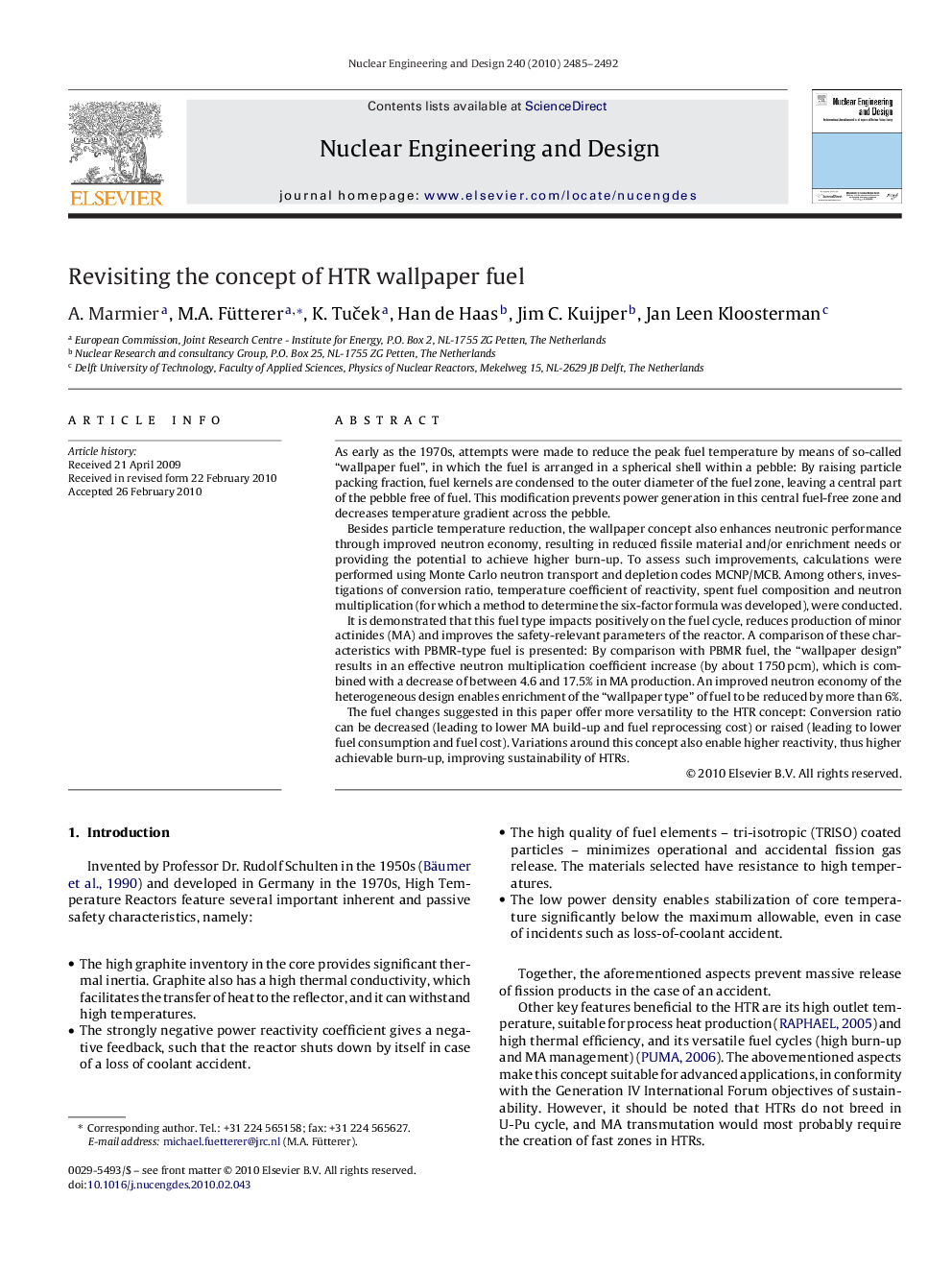| کد مقاله | کد نشریه | سال انتشار | مقاله انگلیسی | نسخه تمام متن |
|---|---|---|---|---|
| 298317 | 511784 | 2010 | 8 صفحه PDF | دانلود رایگان |

As early as the 1970s, attempts were made to reduce the peak fuel temperature by means of so-called “wallpaper fuel”, in which the fuel is arranged in a spherical shell within a pebble: By raising particle packing fraction, fuel kernels are condensed to the outer diameter of the fuel zone, leaving a central part of the pebble free of fuel. This modification prevents power generation in this central fuel-free zone and decreases temperature gradient across the pebble.Besides particle temperature reduction, the wallpaper concept also enhances neutronic performance through improved neutron economy, resulting in reduced fissile material and/or enrichment needs or providing the potential to achieve higher burn-up. To assess such improvements, calculations were performed using Monte Carlo neutron transport and depletion codes MCNP/MCB. Among others, investigations of conversion ratio, temperature coefficient of reactivity, spent fuel composition and neutron multiplication (for which a method to determine the six-factor formula was developed), were conducted.It is demonstrated that this fuel type impacts positively on the fuel cycle, reduces production of minor actinides (MA) and improves the safety-relevant parameters of the reactor. A comparison of these characteristics with PBMR-type fuel is presented: By comparison with PBMR fuel, the “wallpaper design” results in an effective neutron multiplication coefficient increase (by about 1750 pcm), which is combined with a decrease of between 4.6 and 17.5% in MA production. An improved neutron economy of the heterogeneous design enables enrichment of the “wallpaper type” of fuel to be reduced by more than 6%.The fuel changes suggested in this paper offer more versatility to the HTR concept: Conversion ratio can be decreased (leading to lower MA build-up and fuel reprocessing cost) or raised (leading to lower fuel consumption and fuel cost). Variations around this concept also enable higher reactivity, thus higher achievable burn-up, improving sustainability of HTRs.
Journal: Nuclear Engineering and Design - Volume 240, Issue 10, October 2010, Pages 2485–2492